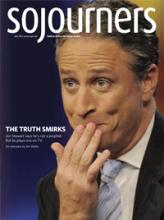I was raised Plymouth Brethren in the 1950s and 1960s, a group that has taken some pride in skipping over the centuries of church history between about 63 C.E. and about 1835, seeking to be “New Testament Christians” who are freed from “traditions of men,” whether they be Catholic men or Protestant men. (The gender-specific language was intentional and unambiguous.)
Not only that, but in the 1970s I had experienced a powerful conversion in my teenage years through the Jesus Movement. It was a movement known for being hip, not ancient; contemporary, not contemplative; and oriented around evangelistic practicalities, not spiritual practices. In the ’80s I was involved in the house-church movement. In the 1990s, it was the church-growth movement.
At each stage, we focused on how to “be” the church and “do” evangelism in the rough waters of late modernity and early post-modernity. We looked around and ahead, but not necessarily back. We were so busy trying to escape the tyranny of the recent past that we had little reason to explore the resources of the ancient past.
Beginning in the mid-90s, the modernist categories of my faith had deconstructed, and something new began to emerge. My dualisms began to fade away. I began integrating the polarities of liberal vs. conservative, pastoral vs. prophetic, contemplative vs. activist, and so on.
But to understand what was happening, I had to understand what had happened.
Dualism has had a long history in the Christian religion. It springs from the belief that ultimate reality exists in two incompatible airtight zones. The distinction begins with a dualism that pits matter against spirit or body versus soul. Eventually there are many dualisms: the contemplative versus the active, the individual versus the communal, the church versus world, the political versus the religious, and so on.
Read the Full Article

